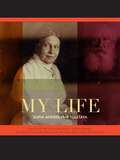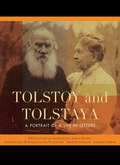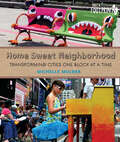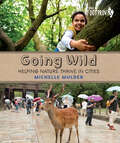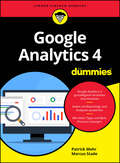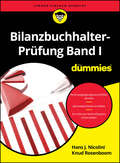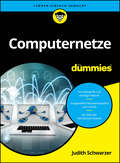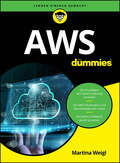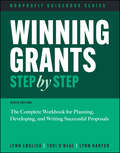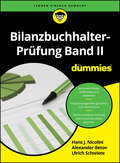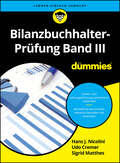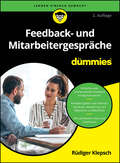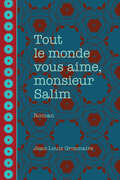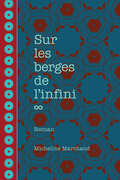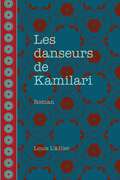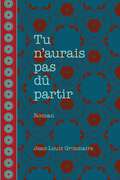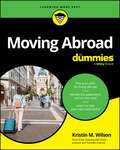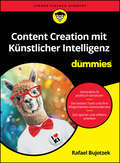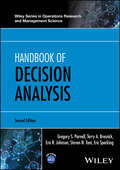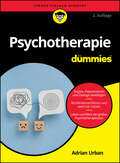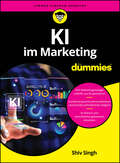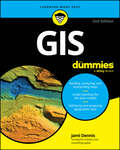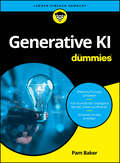- Table View
- List View
My Life
by Sofia Andreevna TolstayaOne hundred years after his death, Leo Tolstoy continues to be regarded as one of the world’s most accomplished writers. Historically, little attention has been paid to his wife Sofia Andreevna Tolstaya. Acting in the capacity of literary assistant, translator, transcriber, and editor, she played an important role in the development of her husband’s career. Her memoirs – which she titled My Life – lay dormant for almost a century. Now their first-time-ever appearance in Russia is complemented by an unabridged and annotated English translation. Tolstaya’s story takes us from her childhood through the early years of her marriage, the writing of War and Peace and Anna Karenina and into the first year of the twentieth century. She paints an intimate and honest portrait of her husband’s character, providing new details about his life to which she alone was privy. She offers a better understanding of Tolstoy’s character, his qualities and failings as a husband and a father, and forms a picture of the quintessential Tolstoyan character which underlies his fiction. My Life also reveals that Tolstaya was an accomplished author in her own right—as well as a translator, amateur artist, musician, photographer, and businesswoman—a rarity in the largely male-dominated world of the time. She was actively involved in the relief efforts for the 1891–92 famine and the emigration of the Doukhobors in 1899. She was a prolific correspondent, in touch with many prominent figures in Russian and Western society. Guests in her home ranged from peasants to princes, from anarchists to artists, from composers to philosophers. Her descriptions of these personalities read as a chronicle of the times, affording a unique portrait of late-19th- and early-20th-century Russian society, ranging from peasants to the Tsar himself. My Life is the most important primary document about Tolstoy to be published in many years and a unique and intimate portrait of one of the greatest literary minds of all time.The Modern Language Association (MLA) awarded the Lois Roth Award to John Woodsworth and Arkadi Klioutchanski of the University of Ottawa’s Slavic Research Group for their translation of Sofia Andreevna Tolstaya’s My Life memoirs. My Life was selected among the top 100 non-fiction works of 2010 by The Globe and Mail. It has also won an honourable mention in the Biography and Autobiography category of the 2010 American Publishers Awards for the Professional and Scholarly Excellence (PROSE) awards. And, finally, it made it into the Association of American University Presses' 2011 Book, Jacket and Journal Show. Published in English.
Tolstoy and Tolstaya: A Portrait of a Life in Letters
by Andrew DonskovBoth Lev Nikolaevich Tolstoy (1828–1910) and his wife Sofia Andreevna Tolstaya (1844–1919) were prolific letterwriters.Lev Nikolaevich wrote approximately 10,000 letters over his lifetime — 840 of these addressed to his wife. Letters written by (or to) Sofia Andreevna over her lifetime also numbered in the thousands. When Tolstaya published Lev Nikolaevich’s letters to her, she declined to include any of her 644 letters to her husband. The absence of half their correspondence obscured the underlying significance of many of his comments to her and occasionally led the reader to wrong conclusions.The current volume, in presenting a constantly unfolding dialogue between the Tolstoy-Tolstaya couple — mostly for the first time in English translation — offers unique insights into the minds of two fascinating individuals over the 48-year period of their conjugal life. Not only do we ’peer into the souls’ of these deep-thinking correspondents by penetrating their immediate and extended family life — full of joy and sadness, bliss and tragedy but we also observe, as in a generation-spanning chronicle, a variety of scenes of Russian society, from rural peasants to lords and ladies. This hard-cover, illustrated critical edition includes a foreword by Vladimir Il’ich Tolstoy (Lev Tolstoy’s great-great-grandson), introduction, maps, genealogy, as well as eleven additional letters by Sofia Andreevna Tolstaya published here for the very first time in either Russian or English translation. It is a beautiful complement to My Life, a collection of Sofia Tolstaya’s memoirs published in English in 2010 at the University of Ottawa Press."While Adolf Hitler was seizing power in Germany, Adrien Arcand was laying the foundations in Quebec for his Parti national social chrétien. The Blue Shirts, as its members were called, wore a military uniform and prominently displayed the swastika. Arcand saw Jewish conspiracy wherever he turned and his views resonated with his followers who, like him, sought a scapegoat for all the ills eroding society.Even after his imprisonment during the Second World War, the fanatical Adrien Arcand continued his correspondence with those on the frontlines of anti-semitism. Until his death in 1967, he pursued his campaign of propaganda against communists and Jews.Hugues Théorêt describes a dark period in Quebec’s ideological history using an objective approach and careful, rigorous research in this book, which won the 2015 Canada Prize (Federation for the Humanities and Social Sciences).Published in English.
Home Sweet Neighborhood: Transforming Cities One Block at a Time (Orca Footprints #15)
by Michelle MulderPlacemaking—personalizing public and semi-private spaces like front yards—is a growing trend in cities and suburbs around the world, drawing people out of their homes and into conversation with one another. Picture a busy avenue. Now plant trees along the boulevard, paint a mural by the empty lot, and add a community garden. Set up benches along the sidewalks and make space for kids' chalk drawings, and you've set the scene for a thriving community. Kids are natural placemakers, building tree forts, drawing on sidewalks and setting up lemonade stands, but people of all ages can enjoy creative placemaking activities. From Dutch families who drag couches and tables onto sidewalks for outdoor suppers to Canadians who build little lending libraries to share books with neighbors, people can do things that make life more fun and strengthen neighborhoods. Home Sweet Neighborhood combines upbeat text, fun facts and colorful photos to intrigue and inspire readers. The epub edition of this title is fully accessible.
Going Wild: Helping Nature Thrive in Cities (Orca Footprints #12)
by Michelle MulderWhat if the new key to making our lives safer (and even healthier) is to allow the wilderness back into our cities? Going wild. We don't see it as a good thing. And why would we? For most of our time on earth, humanity has been running from lions and other wilderness dangers. We've worked hard to make our local landscapes as safe and convenient as possible. Sometimes that's meant paving over areas that might burst into weeds. Other times, we've dammed rivers for electricity or irrigation. But now pollution, climate change and disruptions to the water cycle are affecting the world in ways we never anticipated. The epub edition of this title is fully accessible.
Let's Eat: Sustainable Food for a Hungry Planet (Orca Footprints #10)
by Kimberley VenessAll the food you eat, whether it's an apple or a steak or a chocolate-coated cricket, has a story. Let's Eat uncovers the secret lives of our groceries, exploring alternative—and sometimes bizarre—farm technology and touring gardens up high on corporate rooftops and down low in military-style bunkers beneath city streets. Packed with interesting and sometimes startling facts on agriculture around the world, Let's Eat reveals everything from the size of the biggest farm in the world to how many pesticides are in a single grape to which insect people prefer to eat.
Google Analytics 4 für Dummies (Für Dummies)
by Patrick Mohr Marcus StadeMit diesem Buch bleiben Sie on track Starten Sie in die Web-Analyse mit Google Analytics 4. Dieses Buch ist das richtige für Sie, egal, ob Sie bereits mit Google Analytics gearbeitet haben oder nicht. Patrick Mohr und Marcus Stade zeigen Ihnen, wie Google Analytics 4 aufgebaut ist, wie Sie es implementieren und wie Sie Daten interpretieren. Sie lernen, wie Sie Webseiten auswerten und Kampagnen analysieren. Außerdem erfahren Sie, wie Sie Reports richtig interpretieren und erstellen, und das anhand von vielen Tipps und Best-Practice-Anleitungen. So können Sie die Nutzer Ihrer Webseiten besser verstehen und das Besuchererlebnis optimieren. Sie erfahren Was ein Event ist und welche Arten von Events es gibt Wie Sie Google Analytics 4 implementieren Warum die Definition der Tracking-Anforderungen so wichtig ist Wie Sie Erkenntnisse aus Reportings gewinnen
Bilanzbuchhalter-Prüfung Band I für Dummies (Für Dummies)
by Hans J. Nicolini Udo Cremer Ulrich E. Schwiete Sigrid Matthes Knud Rosenboom Alexander BetovAlles klar für Ihre Prüfung bei der IHK Sie möchten also Bilanzbuchhalter werden? Respekt! Lassen Sie sich bei der Vorbereitung zur Bilanzbuchhalterprüfung von erfahrenen Experten helfen. In einem dreibändigen Werk präsentieren Ihnen sechs erfahrene Trainer und IHK-Prüfer ihr Fachwissen, erklären Ihnen den Prüfungsstoff verständlich und bereiten ihn mithilfe von anschaulichen Beispielen für Sie auf. Sie geben Ihnen Tipps, was Sie in der Prüfung erwartet, und weisen Sie auf wesentliche Fallen bei den Aufgaben hin. Dieser Band enthält den Prüfungsstoff der ersten Klausur. Sie erfahren Wie Sie Geschäftsvorfälle erfassen und nach Rechnungslegungsvorschriften zu Abschlüssen führen Wie Sie ein internes Kontrollsystem entwickeln, einsetzen und sicherstellen
Computernetze für Dummies (Für Dummies)
by Judith SchwarzerWas sich Computer so zu erzählen haben und wer da sonst noch mitredet Computernetzwerke sind grundlegend für die digitale Kommunikation und die gemeinsame Nutzung von Ressourcen in einem Datennetzwerk. Wie ein Computernetzwerk aufgebaut ist, wie es funktioniert und welche Modelle und Regelwerke dem zugrunde liegen, erfahren Sie in diesem Buch. Die Autorin erläutert unter anderem bekannte Anwendungen des Internets mit wichtigen Kommunikationsabläufen gängiger Netzwerkprotokolle, wie IP, TCP, Ethernet und WLAN. Das Buch vermittelt ein tiefgreifendes Verständnis der wichtigsten Netzwerkabläufe und macht Sie fit für die Internet-Technologien der Zukunft. Sie erfahren Wie die wichtigsten Netzwerkprotokolle und -komponenten zusammenspielen Wie das Internet-Protokoll in der Version 4 und 6 funktioniert Wie aus IP-Paketen physikalische Übertragungssignale werden Was Netzwerke sicher, zuverlässig und mobil macht
AWS für Dummies (Für Dummies)
by Martina WeiglDer einfache Einstieg in AWS/Cloud Computing Dieses Buch ermöglicht Ihnen den Einstieg in AWS, die Amazon Web Services, und beschreibt verständlich die grundlegenden Dienste und fortgeschrittenen Funktionen. Martina Weigl erklärt Ihnen die unterschiedlichen Cloud-Betriebsmodelle und stellt die wichtigsten AWS-Produkte vor. Sie lernen, wie Sie die richtigen Dienste für Ihre Zwecke und Ihr Budget auswählen und wie Sie eigene AWS-Umgebungen aufbauen. Außerdem erfahren Sie anhand praktischer Beispiele, wie Sie die neuesten Entwicklungen im Bereich Künstlicher Intelligenz in der AWS-Cloud nutzen. Sie erfahren Wie Cloud Computing mit AWS funktioniert Wie Sie Cloud-Dienste sicher, kosteneffizient und performant nutzen Wie Sie KI einfach in Ihre Anwendungen einbauen können
Winning Grants Step by Step: The Complete Workbook for Planning, Developing, and Writing Successful Proposals (The Jossey-Bass Nonprofit Guidebook Series)
by Tori O'Neal-McElrath Lynn Kanter Lynn Jenkins EnglishThe gold standard “how-to” manual for writing a winning grant application or proposal, thoroughly updated and revised In the newly revised sixth edition of Winning Grants Step by Step: The Complete Workbook for Planning, Developing and Writing Successful Proposals, a team of veteran nonprofit leaders delivers the most up-to-date and straightforward version of this book yet. This easy-to-read manual enables individuals and organizations alike to combine concepts and research into a strong, effective proposal. The latest edition explores some of the most relevant developments that have occurred over the last five years, including: New information and strategies for prospect research, including state-of-the art databases and AI-enabled research and prospecting How to use AI for research and writing in a ways that are ethical, transparent, strategic, and efficient Updated resources and information for electronically submitted grants Updated guidelines and tips for federal, state, and local government grants in the US New information about the increasing popularity of Donor Advised Funds (DAFs) Updated discussions about mega-donors (like Mackenzie Scott and Melinda Gates) and how they give Perfect for nonprofit executives, professionals, fundraisers, grant and proposal writers, and other stakeholders, Winning Grants Step-by-Step is the most clear-cut and simplified “how-to” guide to writing a winning proposal that incorporates the latest changes in the philanthropic sector and nonprofit community.
Bilanzbuchhalter-Prüfung Band II für Dummies (Für Dummies)
by Hans J. Nicolini Udo Cremer Ulrich E. Schwiete Sigrid Matthes Knud Rosenboom Alexander BetovAlles klar für Ihre Prüfung bei der IHK Sie möchten also Bilanzbuchhalter werden? Respekt! Lassen Sie sich bei der Vorbereitung zur Bilanzbuchhalterprüfung von erfahrenen Experten helfen. In einem dreibändigen Werk präsentieren Ihnen sechs erfahrene Trainer und IHK-Prüfer ihr Fachwissen, erklären Ihnen den Prüfungsstoff verständlich und bereiten ihn mithilfe von anschaulichen Beispielen für Sie auf. Sie geben Ihnen Tipps, was Sie in der Prüfung erwartet, und weisen Sie auf wesentliche Fallen bei den Aufgaben hin. Dieser Band enthält den Prüfungsstoff der zweiten Klausur. Sie erfahren Wie Sie Jahresabschlüsse aufbereiten und auswerten Was das Finanzmanagement des Unternehmens ausmacht Wie Sie Kommunikation, Führung und Zusammenarbeit aktiv steuern
Bilanzbuchhalter-Prüfung Band III für Dummies (Für Dummies)
by Hans J. Nicolini Udo Cremer Ulrich E. Schwiete Sigrid Matthes Knud Rosenboom Alexander BetovAlles klar für Ihre Prüfung bei der IHK Sie möchten also Bilanzbuchhalter werden? Respekt! Lassen Sie sich bei der Vorbereitung zur Bilanzbuchhalterprüfung von erfahrenen Experten helfen. In einem dreibändigen Werk präsentieren Ihnen sechs erfahrene Trainer und IHK-Prüfer ihr Fachwissen, erklären Ihnen den Prüfungsstoff verständlich und bereiten ihn mithilfe von anschaulichen Beispielen für Sie auf. Sie geben Ihnen Tipps, was Sie in der Prüfung erwartet, und weisen Sie auf wesentliche Fallen bei den Aufgaben hin. Dieser Band enthält den Prüfungsstoff der dritten Klausur. Sie erfahren Wie Sie betriebliche Sachverhalte steuerlich darstellen Wie Sie die Kosten- und Leistungsrechnung zielorientiert anwenden Wie Sie klausurtypische Aufgaben lösen
Feedback- und Mitarbeitergespräch für Dummies (Für Dummies)
by Rudiger KlepschSo motivieren Sie Ihre Mitarbeiter und werden ein besserer Chef Ohne Kommunikation geht nichts im Berufsalltag. Feedback soll motivieren und dem Empfänger Orientierung bieten, in Mitarbeitergesprächen stecken Sie die Ziele Ihres Teams ab. Doch zur richtigen Zeit den richtigen Ton zu finden ist gar nicht so leicht. Dr. Rüdiger Klepsch zeigt Ihnen, wie Sie verschiedene Mitarbeitergespräche optimal vorbereiten und durchführen, sodass Sie es schaffen, auch heikle Situationen angemessen zu gestalten. Auch zum Thema hybride Gespräche finden sich wertvolle Tipps. Zahlreiche Checklisten und Fragebogen unterstützen Sie bei der Vorbereitung, Durchführung und Auswertung. Sie erfahren Wie Sie Kritikgespräche und Leistungsbeurteilungen optimal vorbereiten Wie Sie Ihr Team durch gezieltes Feedback inspirieren und motivieren Welche Fallen Sie bei hybriden Gesprächen vermeiden sollten
Tout le monde vous aime, monsieur Salim
by Monsieur Jean-Louis GrosmaireMonsieur Salim habite malgré lui dans une résidence pour personnes âgées de la banlieue parisienne. Il s’en évade en composant dans sa tête le Livre invisible qui raconte sa vie depuis son adoption au Maroc par un couple français. Un jour, il rencontre le jeune Hassan qui risque de basculer dans la délinquance... Peut-être que, comme Hassan et Julie, jeune étudiante en médecine, à votre tour direz-vous : « Tout le monde vous aime, monsieur Salim ! »Formats disponibles : broché et numérique (PDF et ePub accessibles)
Sur les berges de l’infini
by Micheline MarchandDans ce recueil de neuf nouvelles, Micheline Marchand nous fait découvrir le monde fascinant des Métis de la région des Grands Lacs en suivant les générations successives de la famille Laboucanne.D’une nouvelle à l’autre, on se promène dans le temps et dans l’espace, de 1781 jusqu’à aujourd’hui et du lac Huron jusqu’aux berges de la baie Georgienne, de la Guerre de 1812 jusqu’aux conflits plus récents entourant les droits de pêche et en passant par le mauvais sort qui afflige une famille métisse. Fiers descendants des Français et des Premières Nations, les Métis sont attachés au symbole de l’infini (∞) qui orne le drapeau de tous les Métis, y compris ceux des Grands Lacs, qui foulent les berges de l’infini.L’auteure, Micheline Marchand, elle-même d’ascendance métisse, s’est inspirée de faits réels pour nous présenter ce recueil de neuf nouvelles, tantôt drôles, tantôt dramatiques, mais toujours écrites avec verve et passion.Formats disponibles : broché et numérique (PDF et ePub accessibles)
Les danseurs de Kamilari
by Louis L'AllierGabriel, un jeune étudiant, voit sa vie bouleversée lorsqu’au cours d’un voyage en Grèce, il se trouve bien malgré lui mêlé à un complot politique dont il devra démêler l’écheveau. Pour comprendre la menace qui pèse sur celle qui l’a attiré en Grèce et dont il a perdu la trace, il ne dispose que des indices qui s’accumulent sur sa route et d’une mystérieuse lettre écrite par Xénophon d’Athènes il y a plus de deux mille ans. Sous le couvert d’une une enquête archéologique et étymologique, Les danseurs de Kamilari est une réflexion sur l’identité territoriale, l’autochtonie et la solidarité humaine où on découvre que ceux que le temps a dispersés sont réunis par l’Histoire.Lauréat, Prix Christine-Dimitriu-Van-Saanen Salon du livre de Toronto 2011Finaliste, Prix des Lecteurs Radio-Canada 2011Finaliste, Prix de la littérature éclairée du NordFormats disponibles : broché et numérique (PDF et ePub)
Tu n'aurais pas dû partir
by Monsieur Jean-Louis Grosmaire1914. Louison retrouve, dans un tiroir, une lettre qu’elle n’a jamais envoyée à son amie d’enfance restée en Franche-Comté... Son monde bascule, à l’image du monde autour d’elle, car la guerre gronde dans les anciens pays. Tu n’aurais pas dû partir est la suite du roman L’homme qui regardait vers l’ouest, qui raconte le départ de Paul et de sa fille Louison vers l’Amérique et leurs premières années en terre canadienne.Paul, le père de Louison, s’enrôle dans l’Armée canadienne pour sauver sa France natale. Madeleine, son épouse, devra élever seule les deux jeunes enfants depuis leur demeure à Hull.Et voilà que Louison et son ami de cœur James, un Sino-Canadien, s’engagent à leur tour dans la guerre.Dans ce troisième tome de la Saga Javelier, Grosmaire explore la vie des soldats canadiens, africains, des ressortissants chinois en France et au Canada.Prix Louis-Pergaud 2007Formats disponibles : broché et numérique (PDF et ePub accessibles)
Moving Abroad For Dummies
by Kristin M. WilsonExpert guidance for anyone who wants to settle down in another country Moving Abroad For Dummies is for anyone contemplating pulling the trigger on moving out of their homeland for a short time or for good. Be it to enhance a career, retire more comfortably on savings, or find a culture that's a better fit for you, relocating abroad takes some planning to be done right. This book walks you through all the considerations and the steps you'll need to take to make it happen. Author Kristin Wilson is a relocation expert with over 20 years of experience both living abroad and helping hundreds of others do the same. In this confusion-clearing guide, she offers must-know information on planning a move, getting affairs in order before hitting the road, and settling into your new home. Find out whether becoming an expat is the right move for you Learn how to budget for your new life, find a home abroad, and handle culture shock Become a permanent resident of your new country of choice Decide whether and when to return home At every stage of the moving abroad process—decision making, preparation, and adjustment to a new culture—this clear and easy-to-read Dummies guide has your back.
Content Creation mit Künstlicher Intelligenz für Dummies (Für Dummies)
by Rafael BujotzekKreativ und effizient mit Künstlicher Intelligenz Schluss mit Kreativblockaden und zeitraubender Routine! Texte formulieren, Mails beantworten oder Bilder, Töne und Videos gestalten – nutzen Sie KI als leistungsstarkes Werkzeug. Rafael Bujotzek verrät, wie Sie durch geschicktes Prompting beeindruckende Ergebnisse erzielen, Reichweite gewinnen und Workflows automatisieren. Entdecken Sie, wie generative KI die Content Creation revolutioniert und für mehr Barrierefreiheit sorgt. Von Content Management mit nützlichen KI-Tools bis zu juristischen Stolperfallen: Dieses Praxisbuch macht Sie ohne Vorkenntnisse startklar für die Content-Produktion. Sie erfahren Wobei ChatGPT, Copilot, Midjourney und Co. Sie unterstützen können Was KI-Agenten leisten Wie Sie mit KI virale Social-Media-Posts und Podcasts starten Wem Barrierefreiheit nützt Welche rechtlichen Pflichten Sie beachten müssen
Handbook of Decision Analysis (Wiley Series in Operations Research and Management Science)
by Gregory S. Parnell Eric R. Johnson Steven N. Tani Terry A. Bresnick Eric SpeckingQualitative and quantitative techniques to apply decision analysis to real-world decision problems, supported by sound mathematics, best practices, soft skills, and more With substantive illustrations based on the authors’ personal experiences throughout, Handbook of Decision Analysis describes the philosophy, knowledge, science, and art of decision analysis. Key insights from decision analysis applications and behavioral decision analysis research are presented, and numerous decision analysis textbooks, technical books, and research papers are referenced for comprehensive coverage. This book does not introduce new decision analysis mathematical theory, but rather ensures the reader can understand and use the most common mathematics and best practices, allowing them to apply rigorous decision analysis with confidence. The material is supported by examples and solution steps using Microsoft Excel and includes many challenging real-world problems. Given the increase in the availability of data due to the development of products that deliver huge amounts of data, and the development of data science techniques and academic programs, a new theme of this Second Edition is the use of decision analysis techniques with big data and data analytics. Written by a team of highly qualified professionals and academics, Handbook of Decision Analysis includes information on: Behavioral decision-making insights, decision framing opportunities, collaboration with stakeholders, information assessment, and decision analysis modeling techniques Principles of value creation through designing alternatives, clear value/risk tradeoffs, and decision implementation Qualitative and quantitative techniques for each key decision analysis task, as opposed to presenting one technique for all decisions. Stakeholder analysis, decision hierarchies, and influence diagrams to frame descriptive, predictive, and prescriptive analytics decision problems to ensure implementation success Handbook of Decision Analysis is a highly valuable textbook, reference, and/or refresher for students and decision professionals in business, management science, engineering, engineering management, operations management, mathematics, and statistics who want to increase the breadth and depth of their technical and soft skills for success when faced with a professional or personal decision.
Psychotherapie für Dummies (Für Dummies)
by Adrian UrbanGehen Sie seelischen Problemen auf den Grund Interessieren Sie sich für andere Menschen und das, was sie bewegt? Arbeiten Sie vielleicht in einem sozialen oder medizinischen Beruf? Oder kennen Sie jemanden, dem es gerade seelisch schlecht geht, und möchten ihn unterstützen? Psychotherapie kann in vielen Fällen helfen. Adrian Urban beschreibt die Hintergründe von seelischen Schwierigkeiten und stellt Ihnen die wichtigsten Behandlungsansätze und deren Gründer vor, von der Psychoanalyse bis zur Systemischen Therapie. Zudem erläutert er den Ablauf einer Psychotherapie, gibt Hilfestellung bei der Beantragung und erklärt die wichtigsten rechtlichen Hintergründe. Sie erfahren Das Wichtigste über häufige seelische Störungen Wie ambulante und stationäre Therapien ablaufen Woran Sie einen guten Therapeuten erkennen Was zum Erfolg einer Psychotherapie beiträgt
KI im Marketing für Dummies (Für Dummies)
by Shiv SinghMachen Sie sich fit für die Zukunft des Marketing! Mit der Einführung von künstlicher Intelligenz vollzieht sich in der Marketingbranche gerade eine Revolution. KI-Tools sind in der Lage Texte, Bilder, Audio, Video, Websites und mehr zu erstellen. Damit verändern sich alle bisherigen Arbeitsabläufe grundlegend. Der führende Marketingexperte Shiv Singh schildert in diesem Buch, wie und wo KI das Marketing umkrempelt, und zeigt auf, wo darin die Chancen liegen. Ausführliche Use Cases veranschaulichen, wie KI in den Marketingkampagnen großer Unternehmen bereits eingesetzt wird. Damit erhalten Sie wichtige Anregungen, wie Sie die Umstellung auf KI in Ihrem Unternehmen erfolgreich meistern. Sie erfahren Wie Sie SEO und Kundenansprache mit KI optimieren Welche KI-Tools Ihnen wirklich weiterhelfen Wie Sie KI für die Generierung kreativer Inhalte nutzen Wie Sie ethische Richtlinien für die Nutzung von KI aufstellen
GIS For Dummies
by Jami DennisA jargon-free primer on GIS concepts and the essential tech tools Geographic Information Systems (GIS) is the fascinating technology field that's all about understanding and visualizing our world. GIS For Dummies introduces you to the essential skills you'll need if you want to become a geospatial data guru. You'll learn to read, analyze, and interpret maps, and you'll discover how GIS professionals create digital models of landscapes, cities, weather patterns, and beyond. Understand how advances in technology, including AI, are turning GIS tools into powerful assets for solving real-world problems and protecting the planet. This beginner-friendly book makes it easy to grasp necessary GIS concepts so you can apply GIS in your organization, pursue a career in this dynamic field, or just impress others with your geographic knowledge. Learn the basics of data analysis, interpretation, and modeling using Geographic Information Systems Gain the skills to read and interpret all types of maps and visual GIS information Discover how GIS is used in fields like urban planning, environmental science, business, and disaster management Explore whether a career in GIS could be right for you GIS For Dummies is the perfect starting point for students, professionals, and anyone curious about the potential of GIS as a technology or career choice.
Generative KI für Dummies (Für Dummies)
by Pam BakerDie Möglichkeiten generativer KI optimal nutzen Mithilfe von generativer Künstlicher Intelligenz lassen sich Texte, Bilder, Videos, Sprache, Musik, Softwarecodes und auch Kunst und Design erschaffen. Doch wie können Sie die Möglichkeiten generativer KI individuell am besten nutzen? KI-Expertin Pam Baker gibt Ihnen einen guten Überblick und führt Sie in die bekanntesten Tools ein. Das Buch erklärt Ihnen, wie Sie geeignete Plattformen finden, gute Prompts schreiben, KI in Ihren Workflow einbinden und gezielt einsetzen – und entscheiden, wann doch ein wenig Human Touch gebraucht wird. Gut verständlich und praxisnah: der ideale Einstieg in ein Thema, das unsere Arbeitswelt rasant verändert. Sie erfahren Welche Plattformen sich für welche Zwecke eignen Wie Sie KI-generierte Texte, Bilder, Videos und Audios erstellen Wie Sie KI in Ihren Workflow integrieren Wie es Ihnen gelingt, KI-Inhalte »menschlicher« zu machen
Das politische System Deutschlands für Dummies (Für Dummies)
by Sebastian WolfDie Republik auf etwas mehr als einen Blick Das politische System der Bundesrepublik ist nicht ganz einfach zu durchschauen. Was unterscheidet Vertrauensfrage und konstruktives Misstrauensvotum? Was hat es mit dem Föderalismus auf sich? Wie einflussreich sind Bundespräsident und Bundesverfassungsgericht? Ob in der Schule, der Hochschule oder einfach als interessierter Bürger, manchmal muss man unter anderem wissen, welche Aufgaben die Verfassungsorgane, Parteien und Verbände haben und wie sie zusammenwirken. Und da Deutschland fest in zwischenstaatliche Beziehungen eingebunden ist, geht der Autor auch auf internationale Einflüsse ein. Sie erfahren Welche Funktionen Bundesregierung. Bundestag, Bundesrat, Bundespräsident und Bundesverfassungsgericht haben Wie Parteien, Verbände und Medien die Politik beeinflussen Was es mit der Gewaltenteilung, den Bundesländern und der Kommunalpolitik auf sich hat
